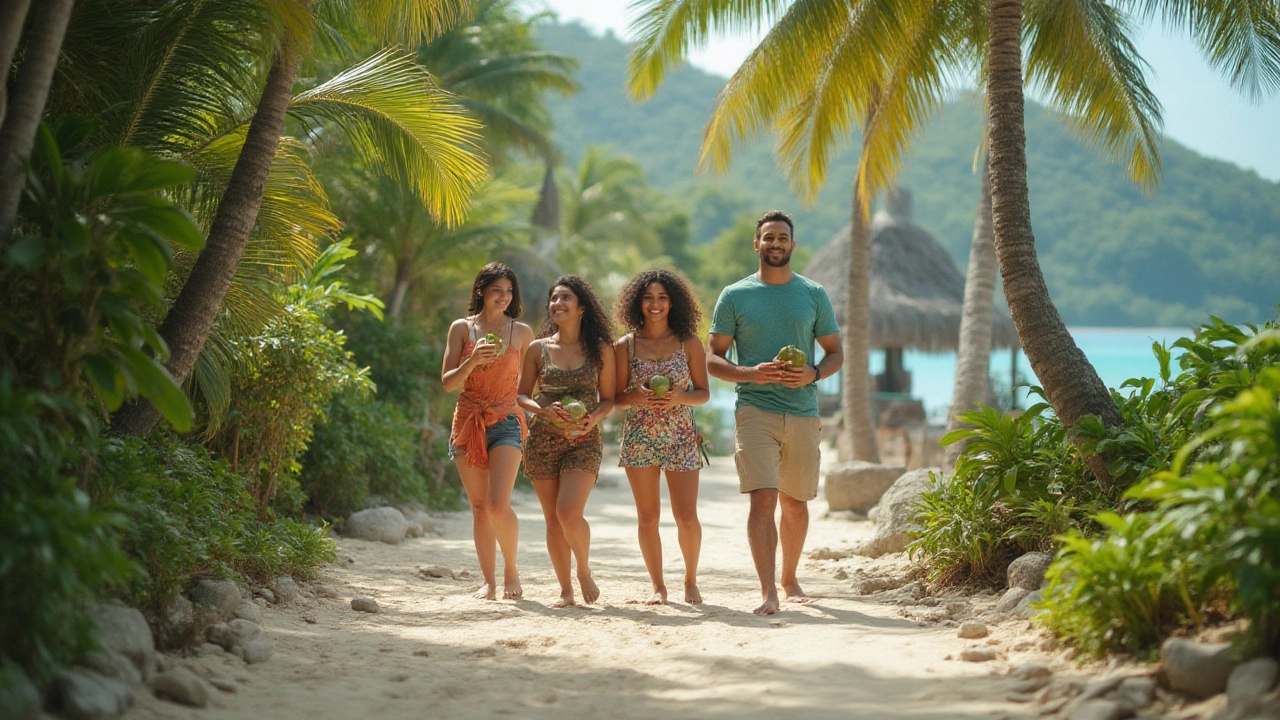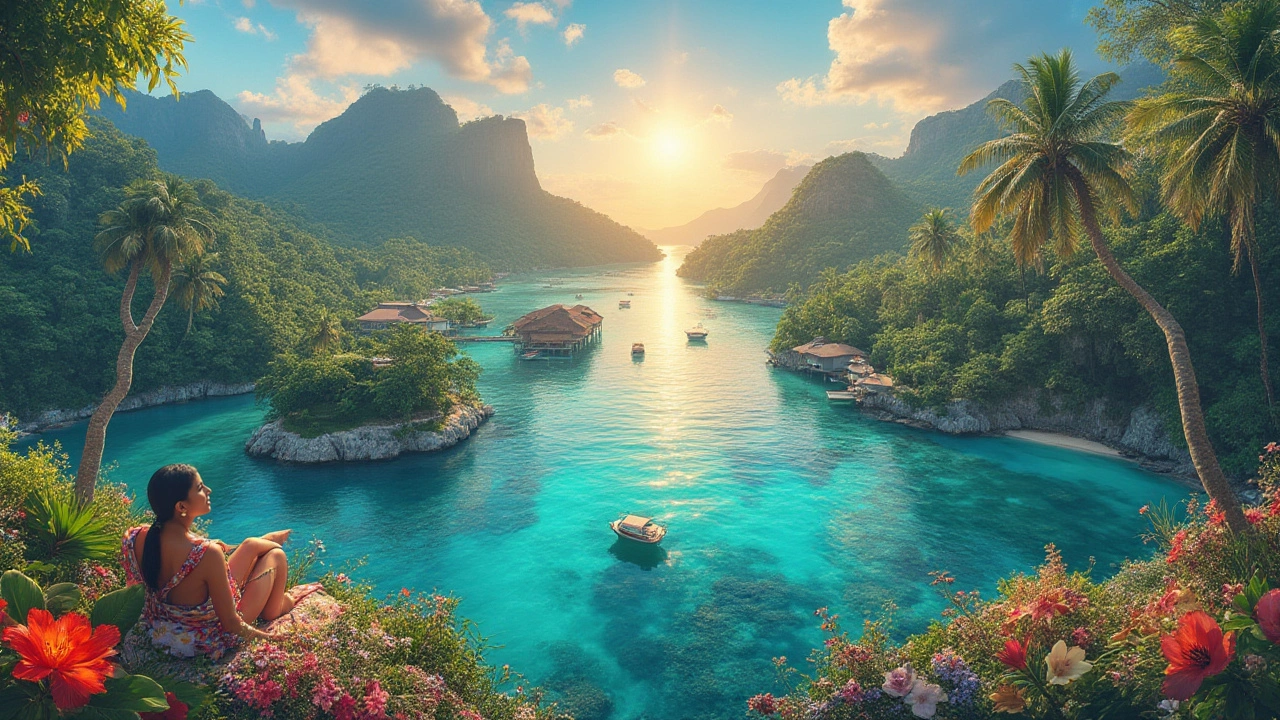What if I told you there’s an island out there where you won’t have to fight for a sunrise hammock or shell out a month’s rent for a glass of wine? The Maldives sparkles in every honeymooner’s Insta-feed, but there’s a whole world of islands peeking just beyond its turquoise shadow. Maybe you’re after bolder adventures, richer culture, fewer crowds, or just a feeling that you’ve stumbled upon your own secret slice of heaven. If you think the Maldives is the only king of tropical bliss, get ready to have your travel wish list shaken up.
Why Search for an Alternative to the Maldives?
The Maldives certainly knows how to flaunt its water villas and powdery beaches. It pulls in over 1.3 million tourists each year. Yet, behind every influencer sunset snap, there’s reality: super-high prices, limited local interaction, strict rules on alcohol, and a landscape that—let’s be honest—can get repetitive after you’ve seen a few islands. Especially post-pandemic, travelers are itching for something fresh and more meaningful. The average cost for a week in the Maldives? A cool $4,000–$10,000 for a couple, depending on where you stay and what you do. And if your idea of fun stretches beyond snorkeling or sipping cocktails, you might feel boxed in.
Let’s talk timing. Maldives’ weather can be a real diva—gorgeous from December to April, stormy and wet for the rest. Book during the wrong window, you swap those magazine-ready blues for grey skies. Then, there’s access. Direct international flights to deep-atoll paradises are rare; expect layovers and speedboat transfers. When you compare that to some islands with direct flights or simple visa policies, Maldives starts to lose its shine for convenience-seekers.
Maybe you’re drawn to culture, food, or nature beyond the beach. The Maldives keeps its local culture hidden from guests (most resorts are on their own islands), so you see little authentic daily life. Alcohol is banned outside resort grounds because it’s a Muslim country—so if you wander off-resort, don’t expect a sunset drink. Want to mingle with locals? You’re better off elsewhere.
As climate change rises, Maldives is one of the lowest-lying nations and faces threats of sea level rise. Islands have even been submerged temporarily by strong storms. While that’s a sobering thought, it makes you wonder: where else can you soak up paradise—and maybe get more for your money, time, and curiosity?
So, what makes an island 'better' than the Maldives? That’s personal, but most travelers want a mix of wow-factor beauty, authenticity, fun stuff to do, a touch of wildness, and a price tag that won’t leave you gasping. Let’s see which islands pull ahead in the race for the title.

Islands That Give Maldives a Run for Its Money
Let’s start by tackling some contenders head-on, uncovering what they offer that the Maldives just can’t rival. Here are the names most globetrotters whisper after swapping stories over airport beers:
- Bora Bora, French Polynesia: Consistently hailed as the world’s most romantic island, Bora Bora’s lagoon is so blue it almost looks fake, protected by a coral reef. Known for luxury, yes, but local guesthouses offer more affordable stays. Overwater bungalows here started the trend. Snorkeling, shark safaris, and jet skiing blow Maldives adventures out of the water.
- Palawan, Philippines: National Geographic called it the 'most beautiful island in the world.' Palawan is a wild paradise—think jungles, secret lagoons, limestone cliffs rising from emerald lakes, and secret beaches. Activities are endless: diving WWII shipwrecks, exploring caves, and hopping between islands. Budget travelers rave about how far the dollar (or rupee) stretches.
- Seychelles: If you crave a real-life Jurassic Park with dreamy beaches, Seychelles has you covered. About 115 granite and coral islands dot the Indian Ocean, home to massive tortoises, vanilla orchids, and hand-sized fruit bats. Seychelles combines exclusive getaways with affordable local life, Creole culture, and even UNESCO-listed beaches (Anse Lazio, for one).
- Zanzibar, Tanzania: For the adventurer who loves spice and history, Zanzibar marries dreamy white sands with a tangled, ancient capital (Stone Town, a UNESCO site). While Maldives locals often stay hidden, Zanzibar invites you to roam fish markets, taste curries, or even snorkel with dolphins just off-shore—all on a much more wallet-friendly budget.
- Koh Lipe, Thailand: Sometimes called the 'Maldives of Thailand,' Koh Lipe is brighter and buzzier but way less expensive. Think barefoot fun, open-air beach bars, neon coral reefs, but with an easy-going, backpacker twist (you can still upgrade to boutique bungalows if you want luxury).
- The Cook Islands: They float in the Pacific between New Zealand and Hawaii. Aitutaki Lagoon is as blue and clear as anything in the Maldives, with that sunken volcano vibe. The best part? It’s laid-back, uncrowded, and offers a blend of Polynesian culture and beachfront pizzerias you won’t get in the Maldives.
- Mauritius: Sometimes forgotten, Mauritius means insane biodiversity (see pink pigeons and flying foxes), jungly mountains, luxury resorts, and a rainbow of cultures. Unlike the Maldives, you won’t be stuck on a single island. Rent a car and tour volcanic craters, bustling local markets, and giant Hindu temples—even as you come back to five-star beach dinners.
- Fiji: With 300+ islands, Fiji’s claim to fame is its people—genuinely friendly, always singing, eager for visitors to join the kava circle. Underwater, world-class reefs and surf breaks await. Value-wise, guesthouses and homestays put the Maldives’ resort prices to shame without dropping the charm.
Now, take a look at just how they compare in a few key areas:
| Island | Best Time to Visit | Visa Policy | Budget Options | Highlight |
|---|---|---|---|---|
| Bora Bora | May to October | Visa-free for many countries (short stays) | Yes, guesthouses | Overwater bungalows, shark diving |
| Palawan | October to May | Visa-free or visa-on-arrival for 150+ countries | Yes—hostels, lodges | Secret lagoons, island hopping |
| Seychelles | April, May, October, November | No visa required up to 90 days | Yes—guesthouses | Giant tortoises, granite beaches |
| Zanzibar | June to October | Visa on arrival for most | Plenty of B&Bs, hotels | UNESCO old town, spice farms |
| Koh Lipe | November to April | Varies by country (most get visa-free 30 days) | Backpacker to upscale | Snorkeling, nightlife, cheap eats |
| Cook Islands | April to November | Visa-free for most | Affordable motels, Airbnbs | Lagoon tours, drumming festivals |
| Mauritius | May to December | Visa-free or easy e-visa | Budget hotels, guesthouses | Wildlife parks, surf beaches |
| Fiji | May to October | Visa-free for 100+ countries | Homestays, backpacker islands | Kava ceremonies, reef diving |
Each of these islands throws down something Maldives can’t: richer culture, more adventure, cheaper stays, or friendlier visa policies. Which one’s your hot pick?

Tips and Insider Tricks for Planning Your Dream Escape
Ready to swap Maldives for a new island honeymoon, family trip, or solo escape? Here’s the inside scoop from my own hard-won passport stamps and a bit of friendly local advice:
- Watch the weather. Most tropical islands split the year into wet and dry. If you hate rain, check those months before booking. It’s not just about showers—typhoons and cyclones can totally reroute your plans, especially in the Pacific (Fiji, Cook Islands, Bora Bora).
- Be flexible on the route. Direct flights are not a rule. Bora Bora or Seychelles often mean a layover in Paris, Dubai, Auckland, or Manila—but don’t see it as a downside. Stopovers can break up jetlag and turn one vacation into two (how about sushi in Tokyo, then overwater hammocks in Tahiti?).
- Island hop for variety. The Maldives is mostly one island per resort, but places like the Philippines, Fiji, Seychelles, and even Thailand are perfect for bouncing from beach to hidden lagoon to bustling port town. Ferries are cheap, and local guesthouses make it a breeze.
- Pack smart. Sunscreen, mosquito repellent, and a rash guard are essentials. On islands with coral reefs, bring reef-safe sunscreen (some places ban regular stuff to protect marine life). Light clothes, sturdy sandals, and a dry-bag for boat trips go a long way.
- Eat local, live local. Whether it’s Creole curry in Seychelles, BBQ pork on Koh Lipe, or fresh mangoes in Palawan, island kitchens are a flavor explosion—not just hotel buffets. Go for food markets, try street eats, and don’t be shy to ask for the house specialty. You’ll probably save money and find your new favorite dish.
- Respect local culture—and find it. The difference between backpacker crowds and exclusive resorts often comes down to how you act and what places you pick. Dress modestly in villages, check if certain beaches have local customs, and greet your hosts. Many islands are more conservative than you’d expect.
- Forget about Wi-Fi. Somewhere between the reefs and palm trees, you’re going to lose connection. That’s the point. Download offline maps, bring a book (or a Kindle loaded up), and maybe even jot down your plan on paper.
- Book early in high season, late for deals. Most islands run full during their best weather months, so grab those rooms 4–6 months ahead if you’re heading out from December to April. If you’re a risk-taker, last-minute deals can pop up for hotels trying to fill rooms off-peak.
One trick? For islands famous for their luxury (like Bora Bora or Seychelles), look for offbeat guesthouses or falés run by locals. These are often way friendlier, with insider stories and homemade meals that leave five-star hotel food in the dust. For instance, in Palawan, I spent $15 a night for a family-run room surrounded by jungle, waking up to wild monkeys and fresh banana pancakes.
You don’t need to stay put, either. If you pick somewhere like the Philippines or Fiji, try splitting your time: a few days in a fancy eco-lodge, then switch to a rustic beach hut or a local guesthouse. It’s easy to arrange on arrival, especially if you use local travel agencies or apps. You’ll get the best of both worlds—comfort and adventure, Instagram and real life.
Of course, the best part about ditching the Maldives isn’t what you give up—it's what you get: real connection, different flavors, more adventure, less ‘paradise tax’ on your wallet, and stories you’ll be retelling forever. Sometimes, the best place is the one you haven’t seen in those glossy brochures yet. That’s the thrill of real travel: the surprise around the next palm tree.
